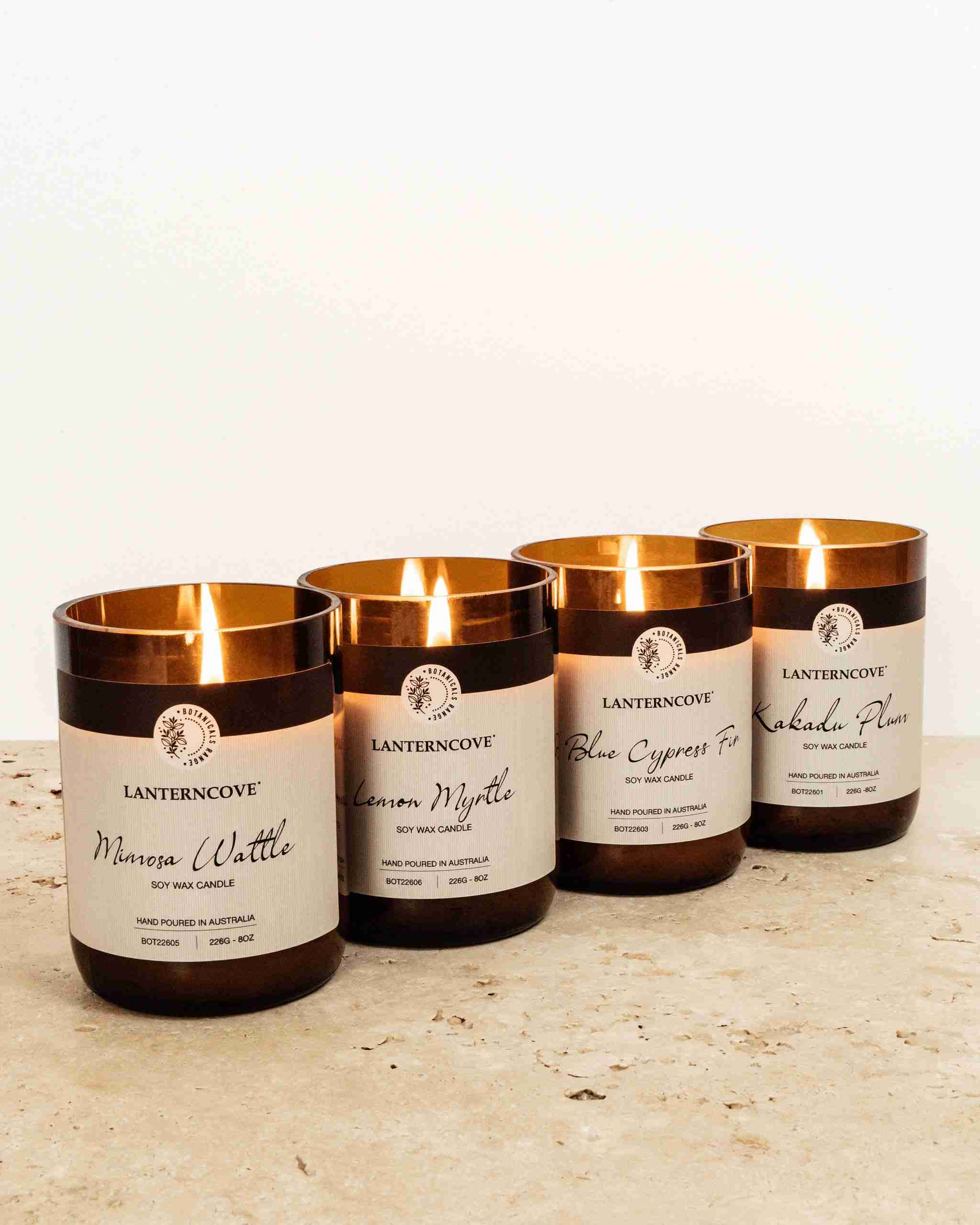Develop Ambiance with Handcrafted Soy Wax Candles and Home Fragrance
Develop Ambiance with Handcrafted Soy Wax Candles and Home Fragrance
Blog Article
From Wick to Wax: Comprehending the Chemistry Behind Soy Wax Candles and Their Ecological Influence
As we illuminate our rooms with the cozy radiance of candles, there exists a world of intricate chemistry behind the seemingly straightforward act of lighting a soy wax candle. Join us as we untangle the clinical details behind soy wax candles and explore their effects on our atmosphere.
Soy Wax Vs. Paraffin Wax
When contrasting soy wax and paraffin wax for candle production, it is necessary to recognize the distinct qualities and advantages of each material. Soy wax is a natural, eco-friendly resource stemmed from soybean oil, making it green and biodegradable - crystal soy candles. On the other hand, paraffin wax is a byproduct of oil refining, which elevates issues about its ecological influence and sustainability
Soy wax candles burn cleaner and produce less residue contrasted to paraffin wax candle lights, making them a healthier option for interior air top quality. Additionally, soy wax has a lower melting point, enabling a longer-lasting candle that spreads fragrance much more properly. Paraffin wax, on the other hand, tends to shed faster and much less cleanly, possibly launching unsafe chemicals right into the air.
From a sustainability point of view, soy wax is preferred for its biodegradability and sustainable sourcing, lining up with the expanding customer choice for eco aware items. While paraffin wax has been a typical option in candle light making due to its affordability and convenience of use, the change towards environmentally friendly choices like soy wax is acquiring energy in the sector.
Chemical Structure of Soy Wax

Combustion Process in Soy Candles
The chemical make-up of soy wax directly affects the combustion process in soy candles, affecting variables such as burn time, scent launch, and ecological influence. When a soy candle light is lit, the warm from the flame thaws the wax near the wick. This fluid wax is after that formulated the wick due to capillary activity. As the liquid wax gets to the flame, it undergoes and vaporizes burning. The burning process involves the vaporized hydrocarbons in the wax reacting with oxygen in the air to produce warm, light, water vapor, and carbon dioxide.
The combustion efficiency of soy candles is influenced by the pureness of the soy wax and the quality of the wick. A clean-burning soy candle with an appropriately sized wick will certainly decrease and produce a stable fire residue development. This not just prolongs the shed time of the candle however also enhances the launch of fragrances. Furthermore, soy wax candles have a lower environmental impact contrasted to paraffin candle lights as a result of their eco-friendly and eco-friendly nature.

Ecological Benefits of Soy Wax

Thought about a lasting alternative to traditional paraffin wax, soy wax offers significant ecological advantages that make it a preferred option amongst eco-conscious consumers. Soy wax burns cleaner and generates much less residue than paraffin wax, contributing to better indoor air top quality and minimizing the demand for cleaning and maintenance. Generally, the environmental benefits of soy wax straighten with the expanding demand for sustainable right here and environmentally friendly products in the market.
Recycling and Disposal Considerations
Recycling and proper disposal of soy wax candle lights play a crucial role in preserving environmental sustainability and decreasing waste in neighborhoods and houses. When it comes to reusing soy wax candles, the first step is to ensure that the candle light has actually shed my response totally.

In regards to disposal, if recycling is not an alternative, soy wax candles are naturally degradable and can be securely dealt with in a lot of house waste systems. Nevertheless, it is constantly suggested to talk to local reusing centers or waste administration solutions for details standards on candle light disposal to make sure proper handling and environmental defense.
Conclusion
In final thought, the chemistry behind soy wax candles discloses their environmental benefits over paraffin wax candle lights. Soy wax, derived from soybean oil, burns cleaner and produces less soot when contrasted to paraffin wax. The burning procedure in soy candle lights is much more effective, causing a longer and much more also burn. Furthermore, soy wax is eco-friendly and biodegradable, making it a more sustainable choice for candle manufacturing. Recycling and appropriate disposal of soy wax candle lights further add to their environmental impact.
When contrasting soy wax and paraffin wax for candle light making, it is necessary to understand the distinctive features and benefits of each product (candles).Soy wax candles shed cleaner and send out much less residue contrasted to paraffin wax candle lights, making them this website a healthier selection for indoor air top quality.Considered a lasting option to typical paraffin wax, soy wax supplies significant ecological advantages that make it a popular choice among eco-conscious consumers. Soy wax burns cleaner and generates less soot than paraffin wax, contributing to far better interior air top quality and decreasing the need for cleansing and maintenance.In conclusion, the chemistry behind soy wax candle lights exposes their ecological advantages over paraffin wax candles
Report this page